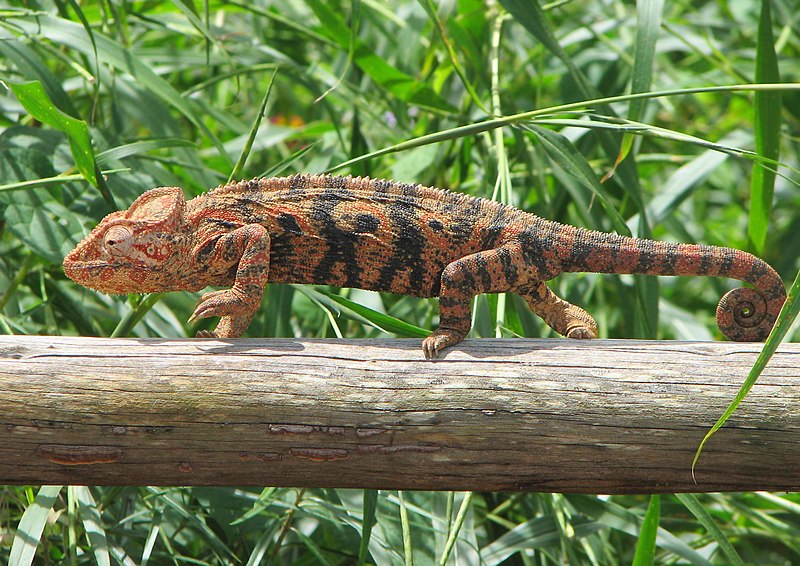
Basic Diet
Newt-feeding is simplified by the fact that nearly all species will take non-living foods…this is in sharp contrast to terrestrial salamanders, which generally consume live prey only. Read More »

Newt-feeding is simplified by the fact that nearly all species will take non-living foods…this is in sharp contrast to terrestrial salamanders, which generally consume live prey only. Read More »
The wonderfully bizarre Malayan Leaf Frog, Megophrys nasuta, has always been a somewhat difficult species to keep. However, we now have a better understanding of its needs, and captive breeding is becoming more regular. As it turns out, the Malayan Leaf Frog’s reproductive behavior is as unusual as its appearance.
Malayan Leaf Frogs range from southern Thailand through the Malayan Peninsula, Indonesia and Sumatra to Borneo. Despite the large range, uncanny camouflage and a preference for forested habitats renders them difficult to find. Little is known of their status and conservation needs.
Malayan Leaf Frogs are classified in the family Megophryidae, a group of 150+ largely nocturnal, leaf-mimicking species. Most prefer walking to hopping, and many are largely unstudied. Read More »
 Most chameleons will eagerly accept crickets and mealworms. However, even if you use reptile vitamin/mineral supplements, a diet comprised of 2-3 insect species is not suitable for chameleons – or for hardly any reptile or amphibian. Your lizards will survive on such fare for awhile, but will inevitably develop nutritional disorders and die “long before their time”. To avoid this, please read the following article before purchasing a chameleon; the information provided is applicable to Parson’s, Panther, Veiled and all other popularly-kept species.
Most chameleons will eagerly accept crickets and mealworms. However, even if you use reptile vitamin/mineral supplements, a diet comprised of 2-3 insect species is not suitable for chameleons – or for hardly any reptile or amphibian. Your lizards will survive on such fare for awhile, but will inevitably develop nutritional disorders and die “long before their time”. To avoid this, please read the following article before purchasing a chameleon; the information provided is applicable to Parson’s, Panther, Veiled and all other popularly-kept species.
A varied diet is essential if you are to have success in keeping, much less breeding, chameleons long-term. The few field studies that have been done indicate that free-living chameleons consume dozens of invertebrate species. Read More »
 Salamanders are by no means defenseless – indeed, the skin toxins produced by the California Newt and its relatives are among the most virulent natural chemicals known. But most herpers tend to regard them as small, slow-moving, inoffensive beasts. Not so the mighty Greater Siren, Siren lacertina. This caudate “rule-breaker” can bite viciously in self defense, and is a major predator in its environment…but it is also among the most interesting amphibians that one can keep, and very hardy to boot.
Salamanders are by no means defenseless – indeed, the skin toxins produced by the California Newt and its relatives are among the most virulent natural chemicals known. But most herpers tend to regard them as small, slow-moving, inoffensive beasts. Not so the mighty Greater Siren, Siren lacertina. This caudate “rule-breaker” can bite viciously in self defense, and is a major predator in its environment…but it is also among the most interesting amphibians that one can keep, and very hardy to boot.
The long, eel-like body is grey or olive to near-black in color. Measuring up to 38.5 inches in length, Greater Sirens are among the world’s longest salamanders. They are exceeded in length only by the Two-toed Amphiuma (also native to the USA) and the Japanese and Chinese Giant Salamanders. Read More »
 The Leopard Gecko, Eublepharis macularius, is one of the most popular of all reptilian pets, and much has been written on its care and breeding. But this lizard’s other side – how and where it lives in the wild – is less familiar. Read More »
The Leopard Gecko, Eublepharis macularius, is one of the most popular of all reptilian pets, and much has been written on its care and breeding. But this lizard’s other side – how and where it lives in the wild – is less familiar. Read More »